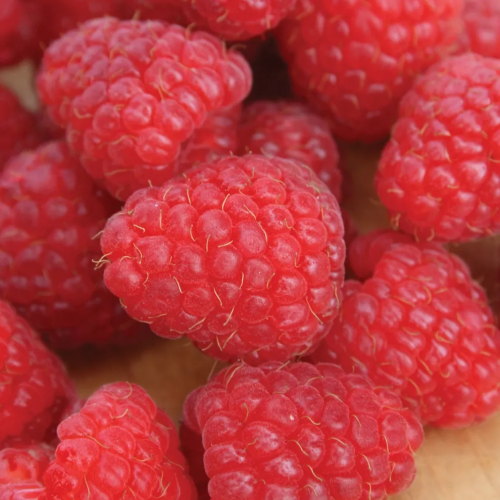How to winterize raspberries in 5 easy steps – plus the exact kit you need for great harvests of fruit year after year
Show your raspberries some love in the fall
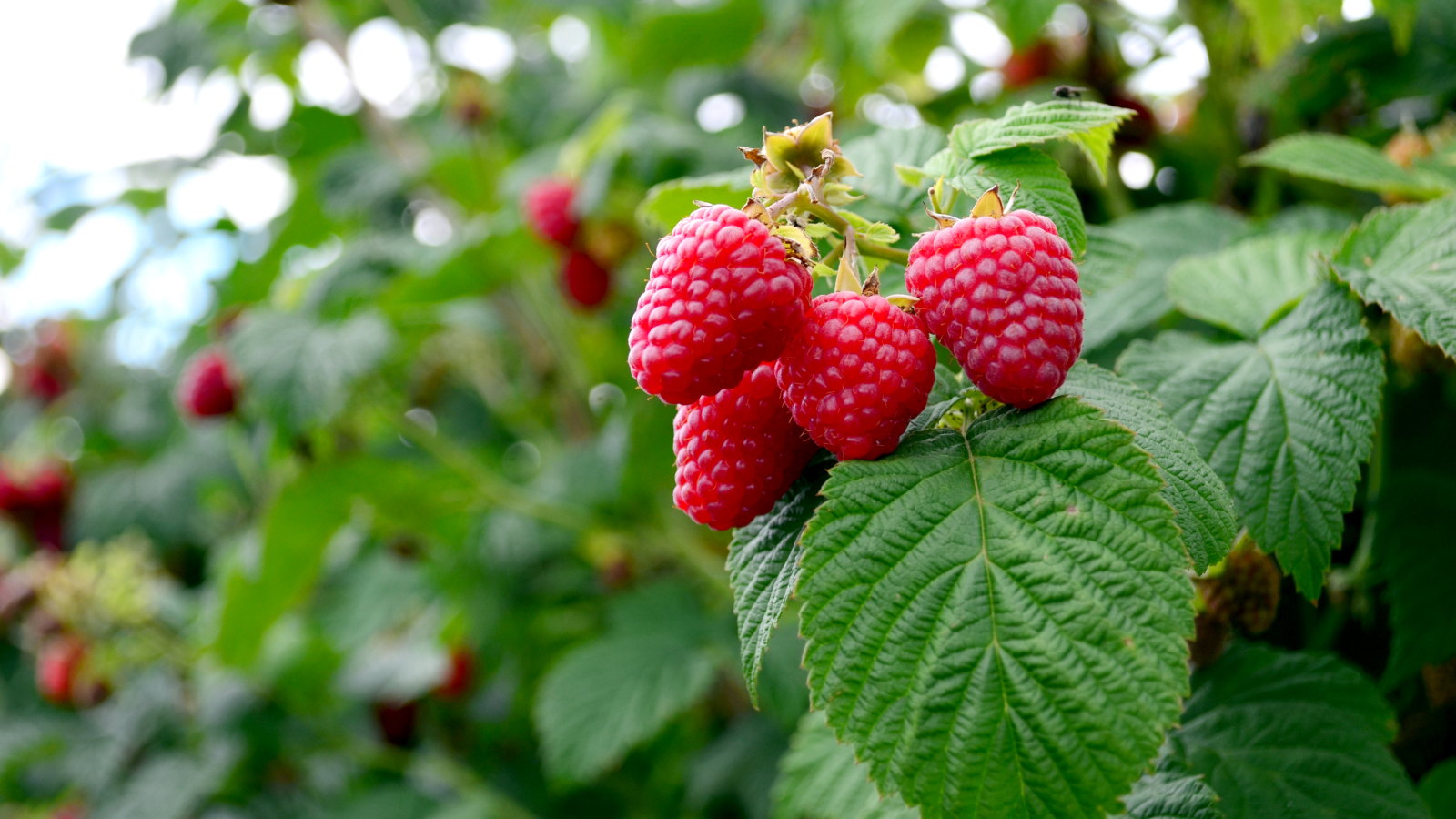

Raspberries are easy-to-grow fruits adored for their sharp-sweet berries. For the best harvests year after year, they want some TLC ahead of winter to keep them healthy and productive for the next season.
Different varieties of raspberries produce fruits with varying colors, shapes, and tastes. The two main types are summer-fruiting raspberries and fall-bearing ones, with the former fruiting on old canes and the latter on the current season’s growth.
When you grow raspberries, picking the right varieties and caring for them properly means that any type can provide rich pickings for many years. Proper care includes knowing how to winterize raspberries to survive the coldest season and come back strong in spring, providing a great harvest that summer or fall.
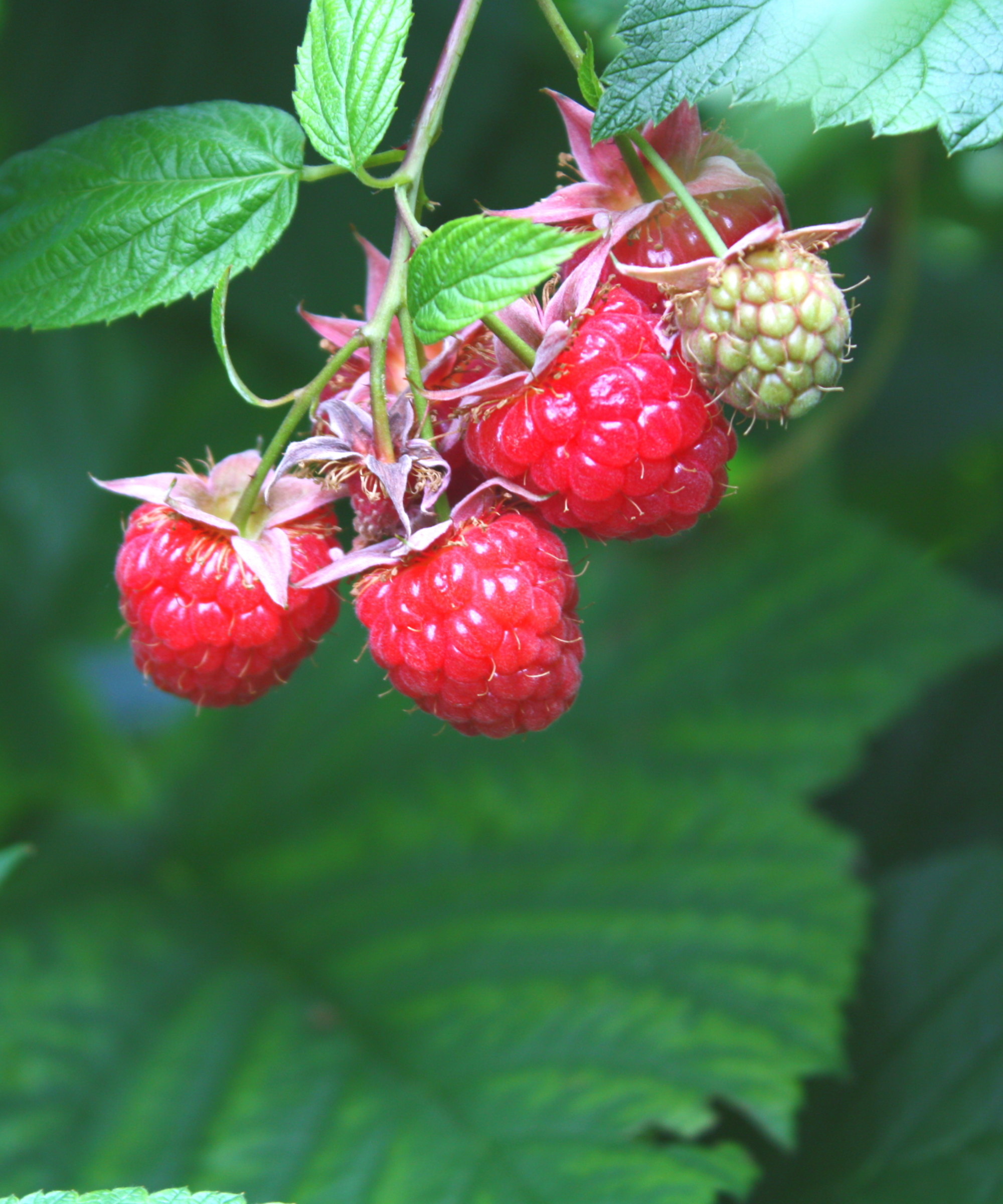
How to winterize raspberries in the fall
Raspberries are hardy fruits that can be grown down to US hardiness zones 3 or 4, but the hardiness will depend on the variety.
Picking the best variety for your climate and hardiness zone ensures you'll get raspberries that fruit successfully. In colder climates, less hardy varieties will not thrive, and the shorter growing seasons may not be as suitable for fall-fruiting types. It is also key to choose the right variety if you want to grow raspberries in pots.
When it comes to how to winterize raspberries, the following five steps are crucially important:
1. Weed plants thoroughly
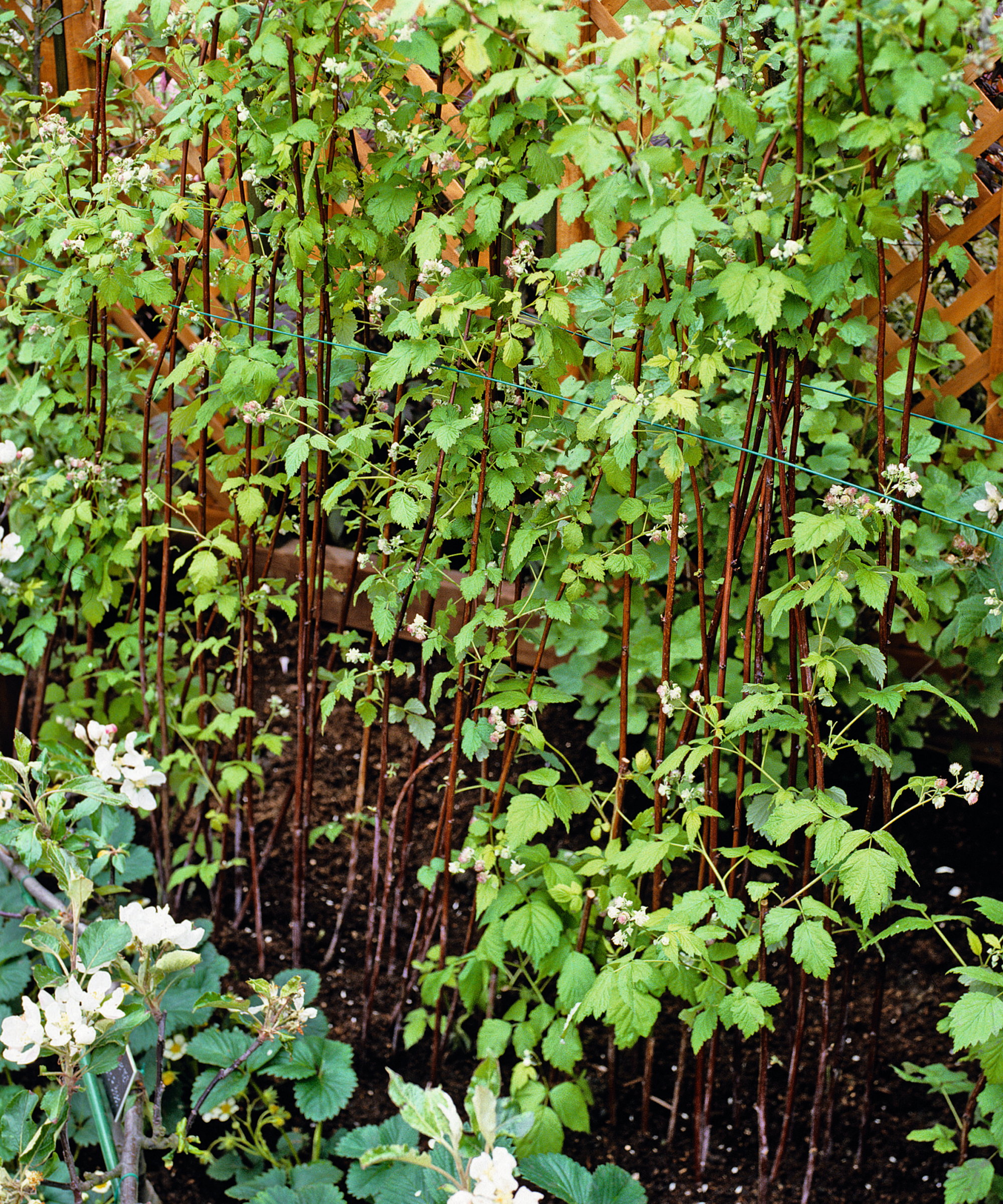
Weeds will compete with your raspberry plants for the water and nutrients in the soil, so you should get rid of them.
Design expertise in your inbox – from inspiring decorating ideas and beautiful celebrity homes to practical gardening advice and shopping round-ups.
The fall is a great time to clear out any weeds that are growing around the base of your raspberry canes, as these unwanted plants are going to compete with the raspberries and rob them of essential plant nutrients. If weeds are left to their own devices, it will impact your yield.
Remove any common weeds from around your raspberries, being careful to remove the entire root, especially when dealing with perennial weeds (otherwise they'll shoot again from the remaining underground roots).
The best weeder types for perennial weeds are a garden fork or a weeding tool like this at Amazon, which has an angled head to lever even deep-rooted weeds like dandelions out of the soil.
2. Water plants until the first frost
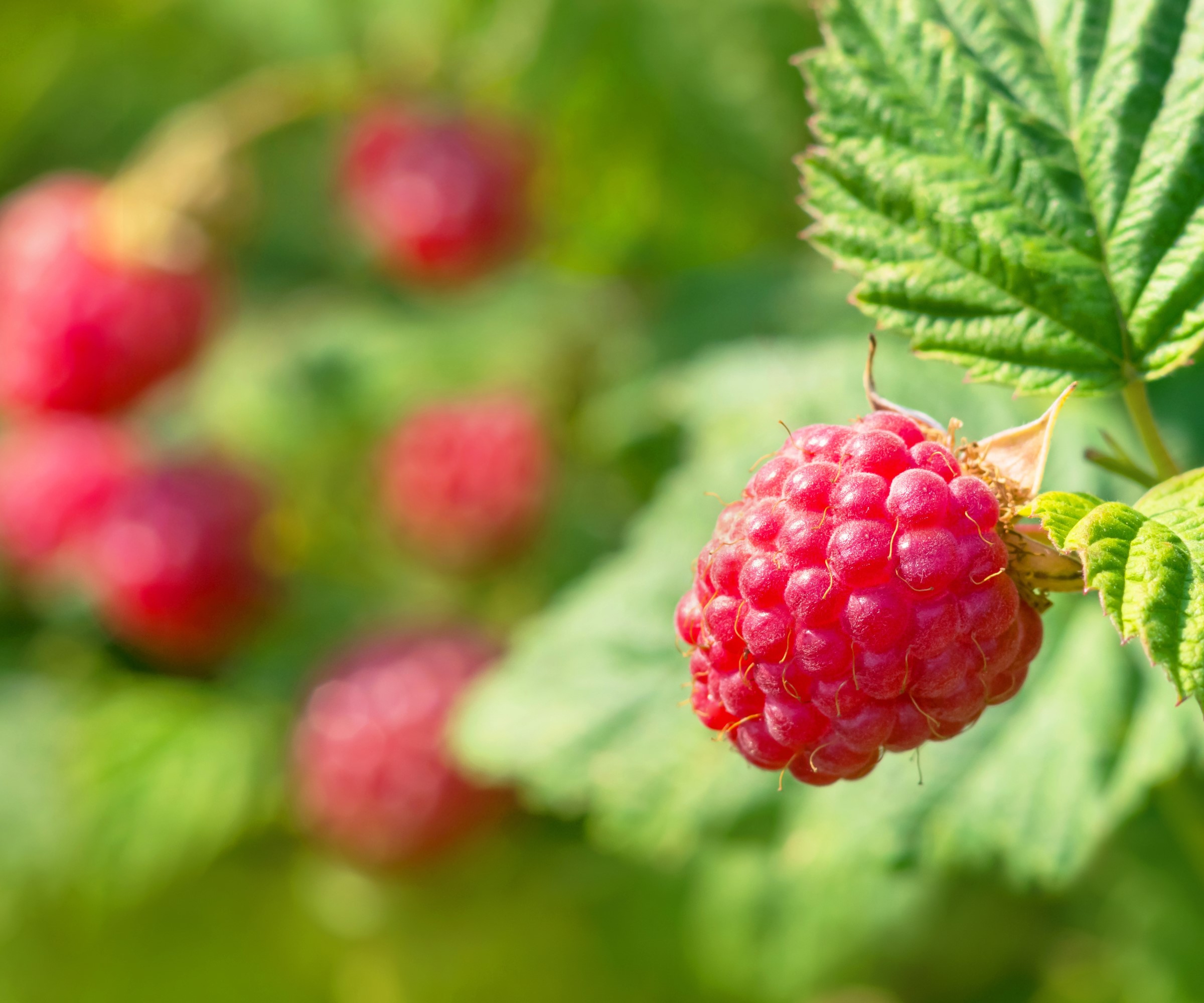
Raspberry plants require regular watering throughout the year, which extends beyond the fruiting period.
While the window from spring until harvesting is a prime time to keep plants well-hydrated, it is recommended to continue monitoring and watering raspberries up until the first frost arrives in the fall.
When and how much you water raspberries ahead of winter arriving will depend on your climate. In many zones and locations, there is usually sufficient natural rainfall to provide raspberries with the inch of water a week the canes need to thrive at this time of year.
However, during dry spells, keep the soil moist, as raspberries have shallow rooting systems that can dry out quickly during warmer periods. You can check the soil moisture levels an inch or two under the surface with your fingers, or by using a soil moisture meter (like this soil moisture meter at Amazon).
Water raspberries through fall and up until the frosts, but then stop. Continuing to water into winter is a watering mistake that leaves plants at risk of rotting.
3. Mulch plants
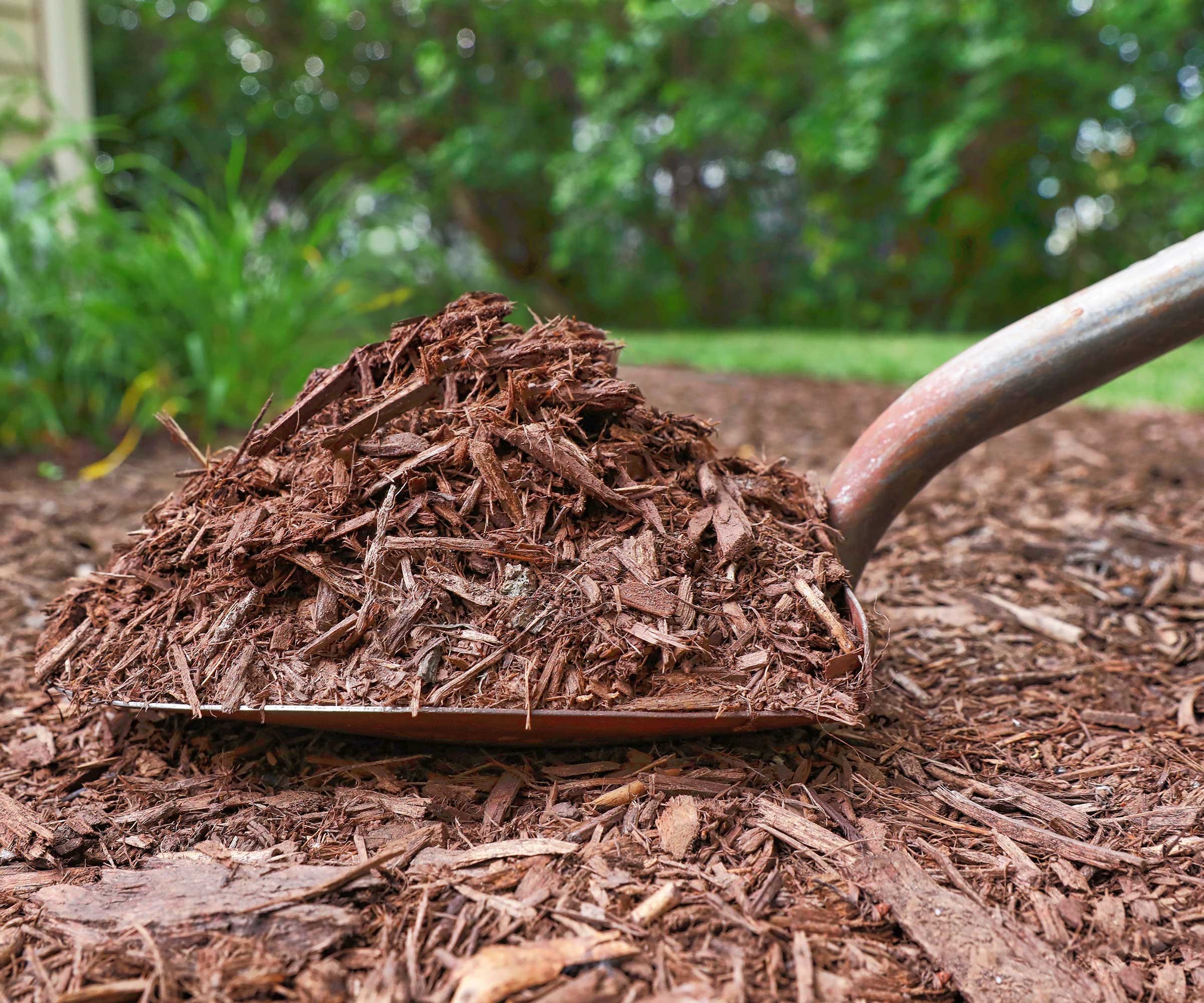
Mulching raspberry plants for winter is important, as it offers multiple benefits. Adding a layer of organic material around canes ahead of winter helps to suppress weeds, retain moisture in the soil, and protect the roots from cold weather.
Choose an organic type of mulch, like compost, straw, shredded leaves, wood chips, or bark, and spread it two to three inches deep. A perfect time to add mulch is after weeding and watering the plants, and before the first frost of the year.
Use a garden shovel (like this heavy-duty shovel at Amazon) to spread the mulch, but leave at least an inch gap around the base of the stems. Mounding the mulch against the stems puts the plant at risk of rot or succumbing to disease.
4. Prune raspberries at the right time
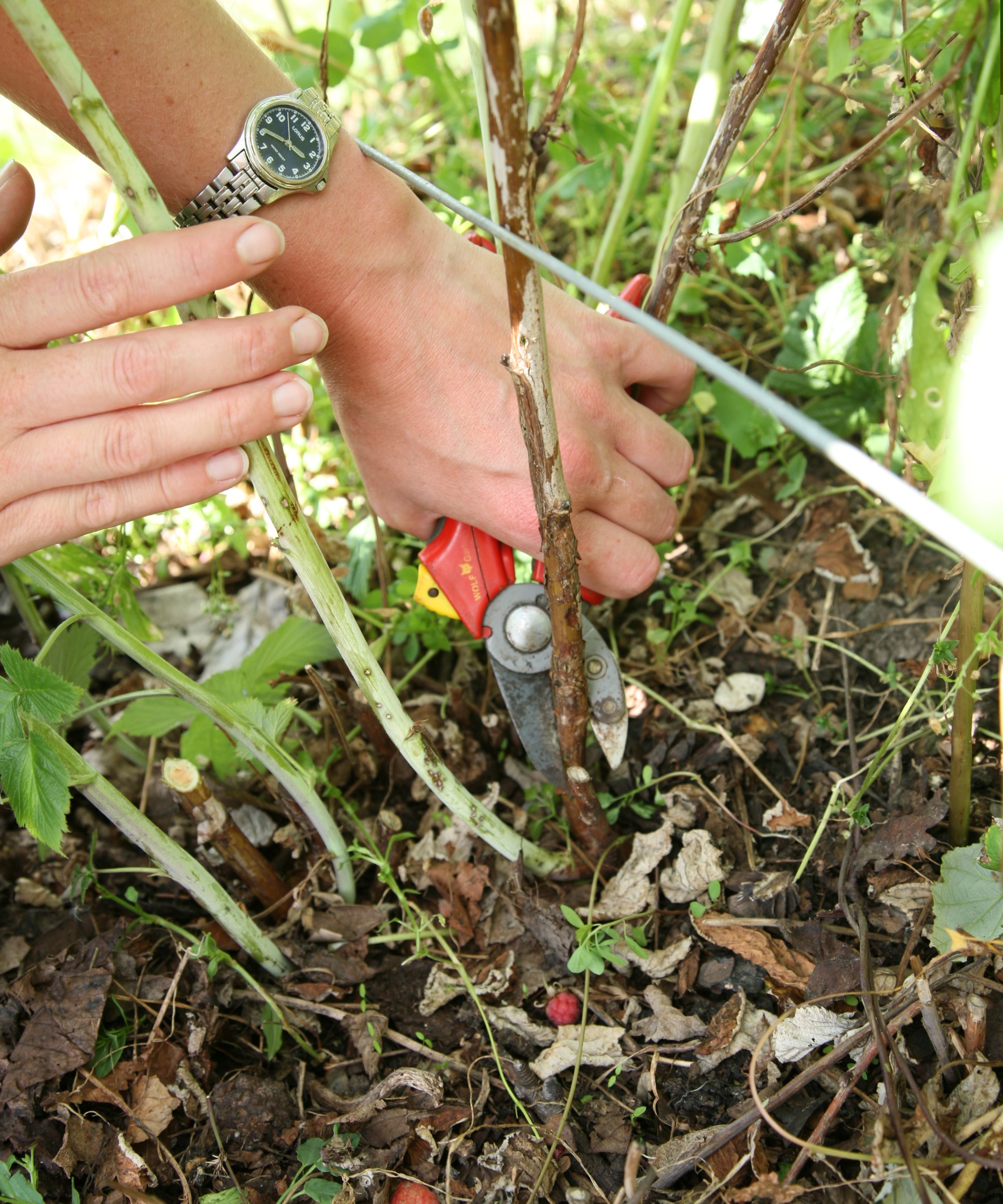
Before winter, it may be time to cut plants back if you haven't already – but not all, as knowing when to prune raspberries depends on the type. As mentioned earlier, varying types bloom on different wood, and that impacts their pruning window.
Summer-fruiting raspberries are pruned after fruiting, so if you have not pruned them yet, they need to be done as part of your winterizing. As for how to prune these raspberries, they bloom on old wood, so remove this year's fruiting stems and leave the new ones that developed this year.
Gently tie each of the stems to carry next year's fruit to your trellis to prevent them from getting damaged by winter winds. Fall is also an ideal time to remove any weaker or damaged wood to stop the plants from getting too congested.
If you have fall-fruiting raspberries, hold off on pruning them back until late winter.
5. Protect plants from deer and rabbits
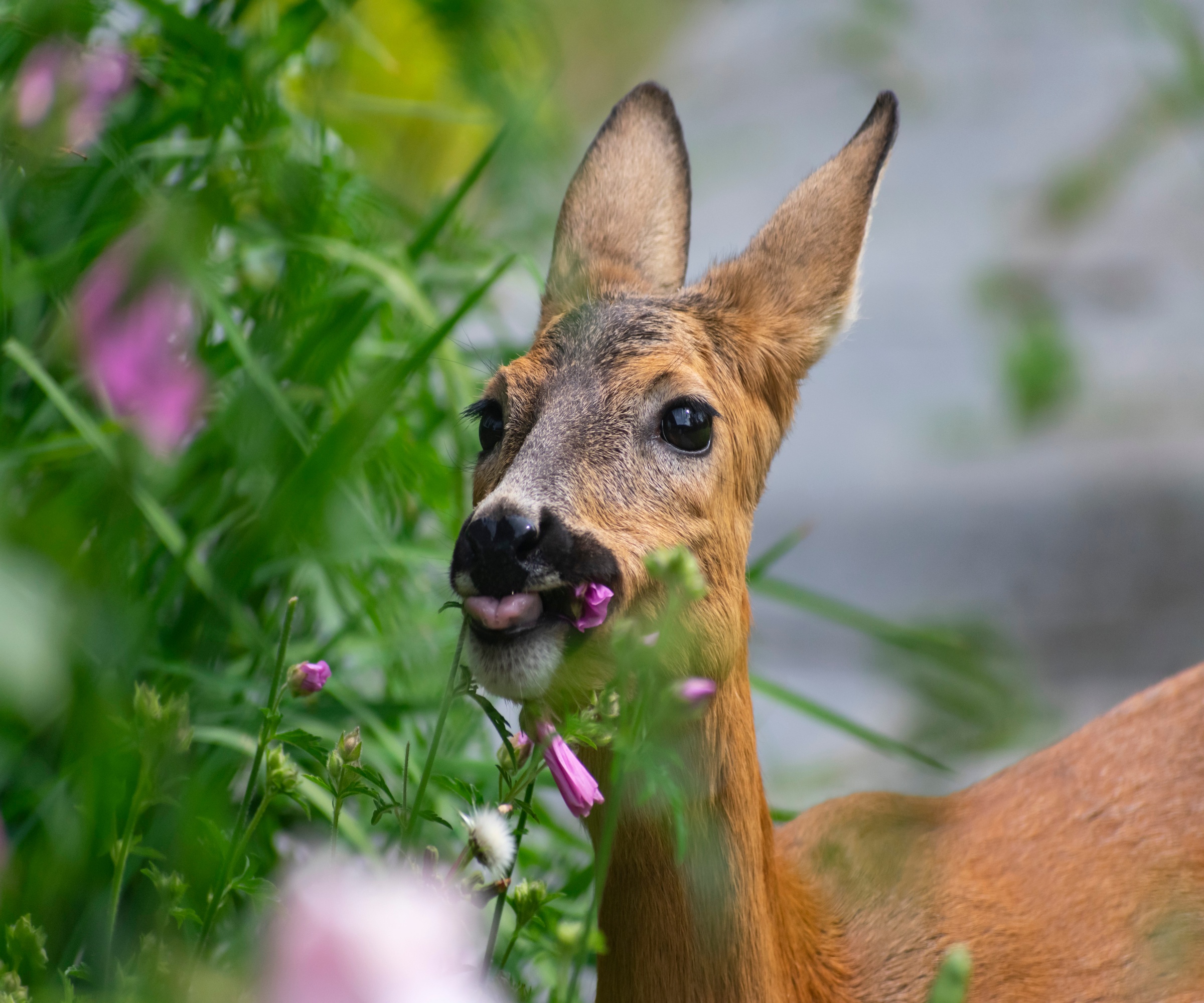
Raspberries are susceptible to damage from hungry pests during winter, as deer and rabbits are known to feed on raspberry plants during the colder months.
A fence is a big, and potentially necessary, commitment to protecting your raspberries. Unfortunately, it may need to be larger than you first expect.
The fence needs to be 8-10 feet high to keep deer away from plants and 20 inches tall and 12-20 inches deep (with a right-angle section underground) to stop rabbits, who can burrow underneath and access your plot.
There are natural pest control methods you can consider, such as planting deer-resistant plants or rabbit-repellent plants nearby to repel the animals.
Alternatively, motion-activated lights or ultrasonic animal repellents can prevent deer or rabbits from troubling your raspberries.
FAQs
Do raspberries need to be covered for frost?
Raspberry plants can survive frosts, and any berries left on the plants can tolerate light frosts. However, the flowers are delicate and can be damaged by unexpected late frosts. A late cold snap, especially following an early warm spell, will impact your harvest. In this scenario, it is beneficial to cover raspberries ahead of a frost. You can protect plants from frost with horticultural fleece, old bedsheets, or blankets.
Fall is an ideal time to plant raspberries. You can get bare-root raspberry plants to add to your plot in fall or late winter, providing the ground is not frozen or waterlogged. Raspberry plants are tolerant of most soil types, but will prefer a sunny and sheltered planting spot in a fertile, well-draining soil.
If your existing raspberry plants have spread, suckers can be carefully dug up and replanted elsewhere to grow into new patches. If you do want to lift and transplant raspberries, an ideal time to do the task is during dormancy from November to March.

Drew has worked as a writer since 2008 and was also a professional gardener for many years. As a trained horticulturist, he worked in prestigious historic gardens, including Hanbury Hall and the world-famous Hidcote Manor Garden. He also spent time as a specialist kitchen gardener at Soho Farmhouse and Netherby Hall, where he grew vegetables, fruit, herbs, and cut flowers for restaurants. Drew has written for numerous print and online publications and is an allotment holder and garden blogger. He is shortlisted for the Digital Gardening Writer of the Year at the 2025 Garden Media Guild Awards.
You must confirm your public display name before commenting
Please logout and then login again, you will then be prompted to enter your display name.


